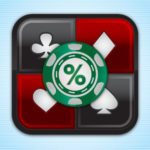The Most Important Series I’ve Ever Written
Back in late 2013, I wrote a five-part series that did something that I still think is pretty incredible: I taught a process for doing complex expected value (EV) calculations without requiring any kind of advanced math. Instead, I only required that players know how to do addition and multiplication. A sixth part came in about a year ago that covered some more ideas that I hadn’t originally covered in the first five editions of the series. Now I return to this series, which is probably my favorite that I’ve done with this strategy column, to help people rediscover it and apply its lessons in their own study and practice.
A Brief Overview of the Series Itself
For the sake of reference, I’m going to cover a quick review of the series as a whole with links to all of the individual parts. Then I’m going to show you how to use this series to get a lot better at poker a lot faster.
- Part 1: Introduction – This introduces players to the mathematical definition of EV and how to do the basic calculation that we use as the building block of this method.
- Part 2: Basic Poker Scenarios – A basic bluffing scenario and a basic calling scenario are examined to give you your first taste of situations that you should know mathematically by heart.
- Part 3: More Complicated Scenarios – Here we cover semi-bluffing as a specific example and give you a simple and handy way of checking your work.
- Part 4: Organizing Large Calculations – This series uses one simple calculation over and over again, but sometimes you have to use it more than once for the same EV calculation, and this part helps you to organize everything to avoid simple mistakes.
- Part 5: Tournament Calculations – You have to account for relative tournament chip value with a model like ICM to do EV calculations for tournament scenarios, and this shows you how to incorporate that into our method.
- Part 6: Calling Scenarios – This is a slightly more in-depth look at calling that includes calling over multiple streets.
This is the only series like this I have seen online, and it’s helped a lot of already established players to perform their own EV calculations in a much more efficient way.
How to Use This Series to Get Better Faster
The basic idea behind learning poker is to get better at evaluating how the different factors are weighted in any given situation. Typically, your only feedback over time is going to be your win-rate, but that’s hardly ever going to be specific enough to tell you how you’re playing in a specific type of situation. You need a stronger indicator, and that’s exactly what EV calculations can do for you.
Studying a Specific Play
Suppose you want to get better at continuation betting. You can start off by looking at some basic scenarios of two players facing each other, seeing what their ranges look like and evaluating the EV of a continuation bet according to how you think those players would play their ranges. From there, you can make adjustments to each player’s strategy to see how these adjustments would change the overall EV. Along similar lines, you can change the ranges themselves.
You can do this for any specific type of play. For example, you could do this with blind stealing, 3-betting pre-flop, facing a double barrel, etc., and that makes this an exceptionally strong and versatile training technique. What’s more is that you don’t have to have any fancy programs or equipment to do this kind of thing.
Sharing Your Analysis
So once you analyze a general situation or a specific hand, you’ll want to post your findings somewhere so that your peers and more skilled players can comment to show you what you’re doing right and what you’re doing wrong. What you need to realize is that this process really pushes your thought processes to the forefront for examination, and while that can be a little scary, it’s also the number one way to correct the mistakes in your thought process in a very short period of time.
Make Things Easier On Yourself
If you want to really kick it into high gear, then you’re going to use spreadsheets to speed up your study and make it more efficient and less prone to mistakes. The basic idea here is that you want to use spreadsheets to do the common calculations for you over and over after you learn how to do them for yourself on paper. This will save you a ton of time and energy, and it will also limit your vulnerability to simple mistakes.
Thankfully I also have a five-part series that shows you how to do just that with screen shots and detailed explanations. What’s more is that I suggest ways to do it for free without having to use any paid programs. The five part series is as follows:
- Part 1: The Basics
- Part 2: Multiple Betting Options
- Part 3: Semi-Bluffing Calculations
- Part 4: Increasing Complications
- Part 5: Checking to Induce
This series should be covered after reading through and studying the EV Calculations Tutorial series listed above.
Final Thoughts
I write this column because I like giving people practical advice that’s effective and efficient. With that having been said, there is an amount of work that has to be put in if you want to get better at poker. My goal is to make it as easy as possible to get from Point A to Point B when it comes to my readers improving at this game.
Submit your review | |








